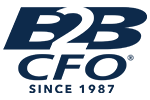
In The Short Term We Are All Dead
Posted on March 21, 2020 by Randal Suttles
This monthly article is dedicated to my friends in banking who deal with struggling small businesses that have misused short term debt.
It is about debt. Short term debt. It can be a business killer.
It is not that short term debt is bad. It is necessary and when used properly, a critical building block in the financial structure for most businesses. The problem is time.
Short term debt, typically lines of credit in mid-market companies like my clients ($2 million to $20 million in revenue) as opposed to commercial paper or standby back up lines, is properly used when it funds working capital, and working capital only. Some rules of thumb: use short term lines to fund 70-80% of current accounts receivable and 50% of inventory. In growing companies the available line needs to match forecast sales growth and the resulting receivable and inventory balances.
The time problem occurs when the short term debt is mismatched and used to purchase or invest in longer term assets like land, buildings, and most frequently equipment. Or, when it is used to fund losses.
For growing companies with room in their line of credit to draw more funds, the temptation to use the line can be seductive. After all, the interest rate is lower than other debt sources and there is no amortizing principal, so payments are lower. But it is a slippery slope. The money is drawn, the new machine or computer(s) is acquired, losses are funded. The line comes due in a year. But the equipment is longer lived than one year, or profits do not recover. It takes time for those investments to pay back (returns on investment, present value of cash flows, internal rates of return, etc, are all topics for another day). It takes time to recover from debt funded losses. That’s the time problem.
When the owner uses the line to buy longer lived assets or pay for losses, the time to maturity is mismatched. The line comes due long before the business can throw off enough cash to pay off the line. The bank may be cooperative, but terms can be tightened, fees raised and worse case, the bank says no to the renewal. And now the short term debt can kill the company, because it has to be repaid. Now. Liquidation of collateral occurs. The business is gone.
Always match the time of the debt repayment to the asset. Receivables and inventory are short timers, lines of credit work magic here and help the business grow. But for equipment, use 3, 5 or 7 year installment loans, or lease from the manufacturer or leasing companies. For commercial property, 10 years, at least (and fix the rate). For land and buildings, the longer the term the better. And for losses, they must be funded by equity or quickly improved cash flow.
One of my clients said he considered 10 year or longer debt as “near equity”. He was right, because the company has lots of years to make a return on the money borrowed. The converse is also true. Short term debt does not give you enough time to be using it for longer term investments or to recover from losses. If you mismatch the time, short term debt can be a killer.
Get Started With Randal
Get Your own complimentary* Discovery Analysis™ from B2B CFO®
*Complimentary for qualified business owners
